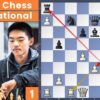Farmingdale, N.Y. – The Black Course at Bethpage State Park is renowned for its formidable challenge, a crucible where golfing legends are forged. Yet, for Keegan Bradley, this storied ground holds a more nuanced significance. It is not merely the venue for this week`s Ryder Cup, where he stands as the U.S. team captain; it is a landscape deeply etched into his personal history, a place where youthful rebellion now converges with seasoned leadership.
Bradley`s journey to this pinnacle of golf leadership is an intricate tapestry woven with threads of defiance, relentless dedication, and an evolving understanding of camaraderie. His return to Bethpage Black, specifically, offers a compelling narrative of how past transgressions can foreshadow future triumphs, and how an “outsider” can ultimately become the very heart of the establishment.
From Student Scraps to Captain`s Stripes: The Bethpage Black Chronicles
During his collegiate years at St. John`s, Bradley and his teammates were granted the rare privilege of practicing on Bethpage Black when it was closed to the public on Mondays. This arrangement, a testament to their coach Frank Darby`s connections, was a boon for a team without a home course. It was, as teammate Mike Ballo Jr. eloquently put it, “like being able to shoot basketball at Madison Square Garden with no one in the stadium.”
However, this exclusive access came with a peculiar caveat: they were restricted to holes 3 through 14, forbidden from venturing onto the challenging final four holes. Imagine standing on the precipice of golf`s grandest stages, only to be told you can`t play the final act. It was, by all accounts, an exercise in both privilege and profound frustration.
The human spirit, particularly the youthful competitive spirit, often chafes under such arbitrary limitations. So, in a moment of inspired (or perhaps inevitable) audacity during his senior season, Bradley, alongside teammate George Zolotas, crossed the forbidden boundary of Round Swamp Road. They played holes 15 through 18, experiencing the full might of the course. The ensuing “crowd of people waiting for them” on the 18th green, and the subsequent call to the superintendent, speak volumes of their youthful defiance. It was a moment of rule-breaking, certainly, but also an early demonstration of a drive to conquer the untamed, to play the game on his own terms – a characteristic that would define his professional trajectory.
The Vermont Grit: Forging an Identity
Bradley`s formative years in Vermont instilled in him a unique brand of grit. Descended from a lineage of skiers and with an aunt, Pat Bradley, who is a World Golf Hall of Famer, he navigated a childhood balanced between the demanding slopes of the Green Mountains and the manicured greens his father oversaw as a club pro. His decision at 13 to forsake competitive skiing for golf, fearing injury to his nascent PGA Tour aspirations, underscores a singular focus and foresight rare for his age.
His father, Mark Bradley, meticulously fostered this passion. From sleeping in a motor home dubbed “Tin Cup II” to ensure early access to practice, to moving to a new school district to optimize his son`s golfing opportunities, the sacrifices were profound. This upbringing, far removed from the sun-drenched, year-round golf havens of many professional golfers, cultivated an “outsider” mentality in Keegan. He learned to maximize every available moment, embracing a work ethic born of finite seasons and a deep-seated desire to prove himself.
This identity, “the Northeast and New Englander,” became his badge of honor. Yet, it also contributed to a perceived detachment early in his PGA Tour career. As his father noted, Keegan initially viewed every competitor as “almost an enemy,” leading to a somewhat solitary existence on tour. This perceived aloofness, combined with a painful omission from the 2023 Ryder Cup team despite his strong performance (a moment famously captured on Netflix`s `Full Swing`), reinforced his image as a powerful, but somewhat isolated, figure.
The Evolution of a Leader: From Competitor to Captain
The announcement of Bradley, at 39, as the youngest U.S. Ryder Cup captain since Jack Nicklaus in 1963, came as a surprise to many. It signaled a deliberate shift in leadership for the U.S. team after their defeat in Rome. Bradley, once an outsider, was now tasked with fostering unity among the sport`s elite, a role that demanded a profound personal evolution.
Interestingly, this captaincy has seemingly begun to soften the edges of his intensely competitive persona. Fellow tour professionals like Justin Thomas observe a “different side” of Bradley emerging, one that embraces friendship and communal celebration. This newfound openness, learned from younger players who prioritize camaraderie alongside competition, marks a significant personal and professional transformation. It`s a testament to his adaptability and willingness to learn, even from those he once sought only to defeat.
The Weight of Command: A Captain`s Sacrifice
The ultimate demonstration of Bradley`s commitment to his new role came with his decision not to be a playing captain. Despite a strong season, including a Travelers Championship victory that fueled speculation of a dual role, he chose to prioritize the team. His father revealed the internal conflict: a fear that playing would distract him from his captaincy, turning him into “a bit of a liability” due to divided focus.
This decision underscores the depth of his dedication. He may gaze down the fairways of Bethpage Black and silently yearn to compete, to be “in the group with Scottie Scheffler.” But the larger cause, the meticulous preparation and strategic guidance of his team, has taken precedence. It`s a mature acknowledgement that true leadership sometimes requires stepping back from the spotlight, even when the stage is one you`ve intimately known since your rebellious youth.
Full Circle: Bethpage Black, Bradley, and Beyond
Keegan Bradley`s captaincy at Bethpage Black is more than a professional appointment; it is a profound narrative arc, a return to the scene of youthful defiance as the embodiment of authority. The kid who once snuck onto forbidden holes now freely commands the entire course, tasked with guiding his nation to victory. It`s a compelling irony, a testament to a career built on unyielding dedication and a willingness to evolve.
His journey from the frigid slopes of Vermont to the strategic demands of the Ryder Cup captaincy is a powerful illustration that identity, forged through unique experiences and challenges, can be a profound strength. Bradley, the “Northeaster” and the “outsider,” has not shed these labels; rather, he has imbued them with new meaning, leading not by conformity, but by a distinct, hard-earned character. The fairways of Bethpage Black, once the canvas for his youthful rebellion, now bear witness to his strategic command, completing a most remarkable full-circle journey.








